Top Plants for Carbon Sequestration
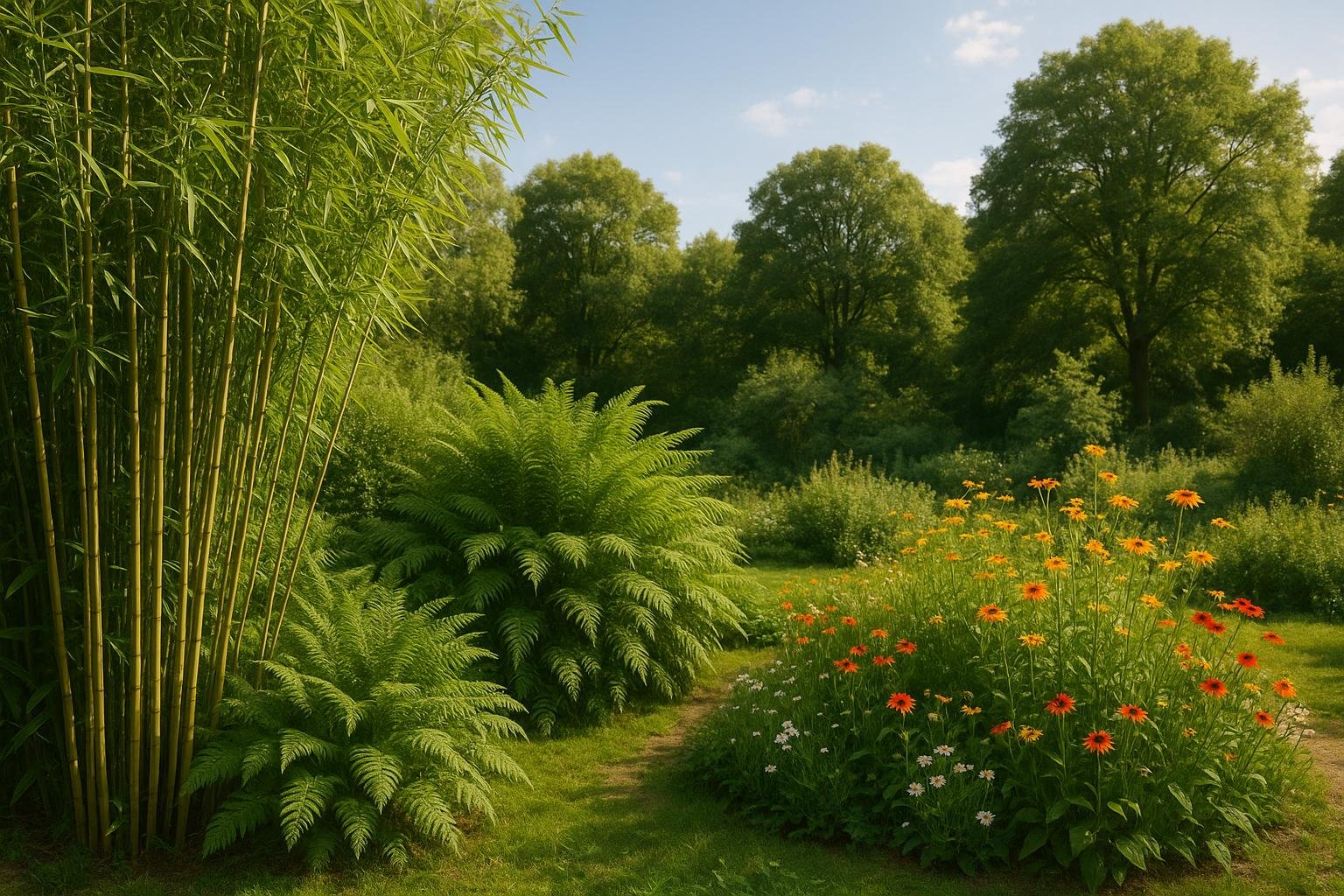
Want to make your garden eco-friendly? Here's how: Certain plants can store carbon effectively, reducing greenhouse gases. By selecting the right species for your region, you can boost carbon storage in your garden while supporting local ecosystems.
Key Takeaways:
- Trees and grasses: Long-lived trees like Red Oak or Douglas Fir and deep-rooted native grasses store the most carbon.
- Regional focus: Choose plants suited to your USDA climate zone for better growth and longevity.
- Soil health matters: Healthy soil stores four times more carbon than the atmosphere. Use compost, mulch, and no-till practices.
- Native plants: Support biodiversity and require less maintenance.
Quick Tips:
- For Zones 3–6: Red Oak, Silver Maple, and prairie grasses are excellent options.
- For Zones 7–10: Agave, Mesquite, and Little Bluestem thrive in heat and drought.
- For Zones 4–9: Douglas Fir and Oregon bentgrass work well in wet-dry climates.
By combining trees, grasses, and soil care, your garden can become a small but impactful carbon sink.
What is Carbon Sequestration, Why is it Important, & How does it Work? | GEO GIRL

How to Choose Plants That Store Carbon
Picking the right plants for carbon storage starts with understanding three essential factors: climate compatibility, growth traits, and ecological benefits. The best plants for storing carbon are those that thrive in your area while maximizing carbon capture both above and below ground.
With climate change reshaping plant hardiness zones across the U.S., selecting plants that can adapt to both current and future conditions is more important than ever. For context, average annual minimum temperatures have risen in 231 out of 242 U.S. locations analyzed, warming by 3.3°F on average since the 1951–1980 period [4]. Knowing your local climate zone is the first step to choosing plants that will succeed in storing carbon long-term.
Matching Plants to USDA Climate Zones
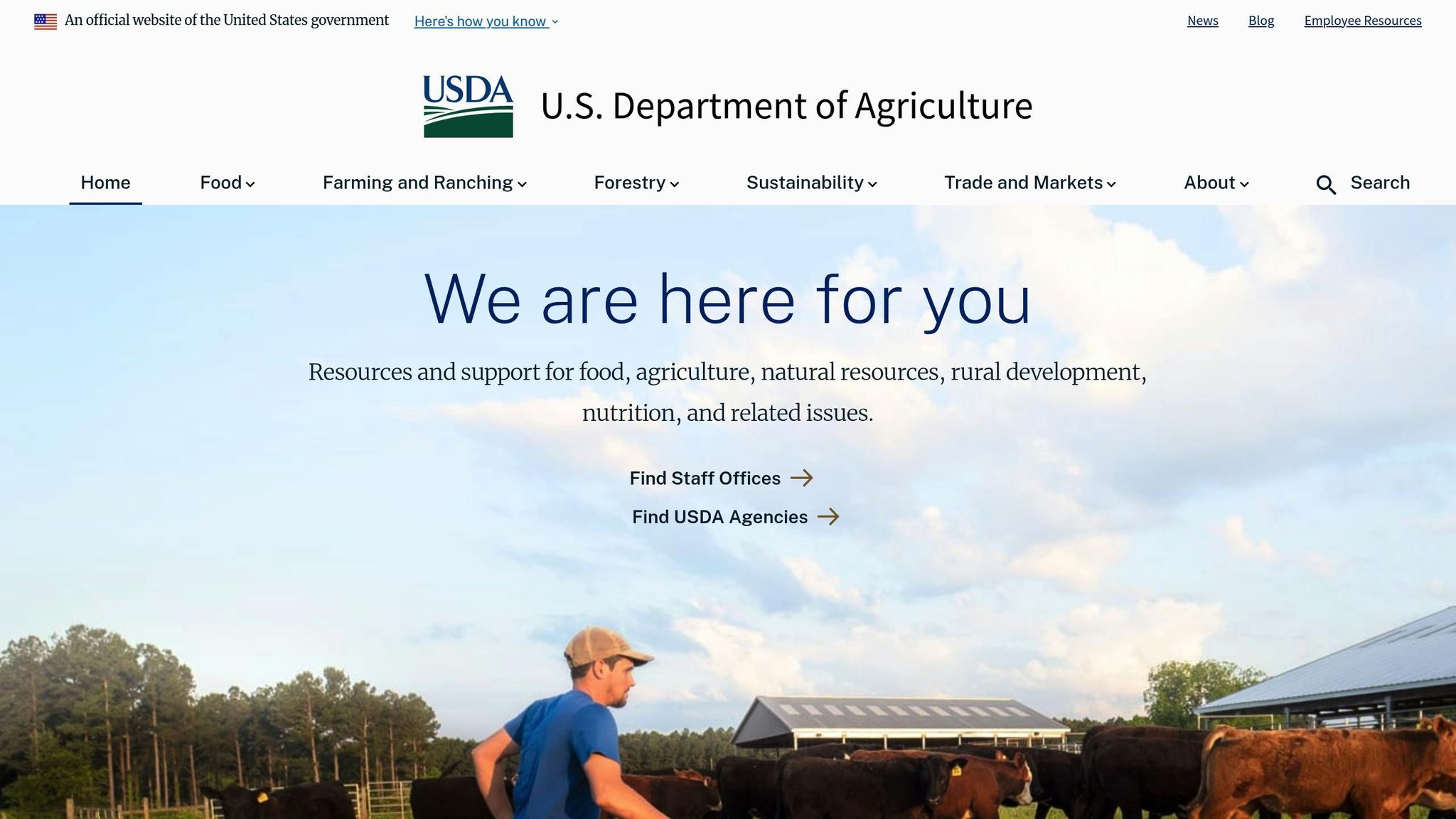
Your USDA hardiness zone helps you identify plants that can survive winter temperatures, but for effective carbon storage, survival isn’t enough - plants need to thrive. Struggling plants grow more slowly, live shorter lives, and may even release stored carbon back into the atmosphere. As Climate Central points out:
If carbon pollution continues, these shifts could force growers to select plants adapted to a wider and warmer range of temperatures. [4]
To prepare for potential climate changes, choose plants rated for your current hardiness zone and one zone warmer. For example, if you live in Zone 6, look for species that can handle Zones 6–7. This approach helps ensure your plants remain effective at storing carbon as conditions evolve.
Growth Rate, Lifespan, and Root Systems
The best plants for carbon storage grow quickly, live long lives, and have deep, extensive root systems. Fast-growing species capture carbon rapidly, while long-lived plants store it for decades or even centuries. Deep-rooted plants are particularly valuable because they deposit carbon deep in the soil, where it remains stable over time. For example, vegetation holds an estimated 450–650 gigatons of carbon, while soils store a staggering 1,500–2,400 gigatons [6].
Prairie grasses are a standout example, with roots that can extend 10–15 feet deep, making them exceptional for underground carbon storage. Dead roots from these grasses contribute 7–50 grams of soil organic carbon per square meter annually [7]. Additionally, plants like desert phreatophytes and perennial grasses tend to have higher root-to-shoot ratios compared to cacti and succulents, making them more effective at storing carbon [7].
When evaluating plants, prioritize those with deep, fibrous roots over shallow tap roots. These root systems create more contact with the soil, promote beneficial mycorrhizal fungi, and enhance both nutrient uptake and carbon storage. Native species often excel in these areas, offering reliable and long-term carbon storage.
Native vs. Non-Native Plant Options
Native plants not only store carbon effectively but also support local ecosystems by improving soil health and fostering biodiversity. Because they’re naturally suited to local conditions, native plants tend to live longer and require less maintenance, ensuring steady carbon storage over time [3].
The numbers are compelling: one acre of prairie plantings can store 1 ton of carbon in roots and soil annually [8]. Native prairie ecosystems can sequester up to 1.8 metric tons of carbon per hectare each year, compared to just 0.4 metric tons for traditional turf grass lawns [10]. Dr. Jacob Jungers from the University of Minnesota explains:
Nearly half of all the root mass below a prairie is carbon, which was removed from the atmosphere during plant growth... prairie roots can be both a short- and long-term method for carbon sequestration. [8]
Native plants also create ecological synergies that enhance carbon storage. For instance, they support 15 times more native caterpillar species than non-native plants [9], enriching food webs and contributing organic matter to the soil through natural decomposition. This process improves soil structure and boosts its carbon retention capacity.
While trees store much of their carbon above ground, native grasses focus their storage below ground, making them more resilient to disturbances like fire or drought. Native grasses also offer faster carbon sequestration than woody plants, along with added benefits for soil health [5].
When selecting plants, focus on native species that combine quick establishment with deep root systems. These plants require minimal intervention while delivering maximum carbon storage benefits tailored to your region’s climate and soil conditions.
Best Carbon-Storing Plants by U.S. Climate Zone
Choosing the right plants for carbon storage starts with understanding what thrives in your specific region. By selecting species suited to your local climate, you can maximize carbon capture in your garden - an important step toward more sustainable gardening. Below are some of the best plant options tailored to different U.S. climate zones.
Northeast and Midwest Regions
The Northeast and Midwest benefit from ample rainfall and distinct seasons, making them ideal for deciduous trees that store carbon both above and below ground.
- Red oak: With its deep, sprawling roots, this native tree can absorb up to 20,000 pounds of CO₂ over 20 years [11].
- Silver maple: Known for its fast growth, it sequesters around 11,000 pounds of carbon dioxide in 25 years [11].
- American sweetgum: This tree provides steady carbon capture year-round, absorbing up to 60 pounds of CO₂ annually [11].
- Native prairie grasses: These grasses begin storing carbon within 1–3 years, making them a quick and effective option for carbon sequestration [5].
South and Southwest Regions
In the South and Southwest, plants adapted to heat and drought excel at carbon storage. These arid regions, which cover a significant portion of the Earth's surface, are home to specialized plant communities with unique carbon-sequestering abilities.
- Agave plants: When paired with nitrogen-fixing mesquite trees, agave can store the dry weight equivalent of 30–60 tons of CO₂ per hectare. Some varieties can produce up to 43 tons of biomass annually [12].
- Mesquite trees: These trees not only store carbon but also hold up to 200 liters of water in their roots, making them resilient in arid conditions [13].
- Native grasses: These grasses focus their carbon storage below ground and can establish themselves within 1–3 years, making them highly resistant to drought and fire [5].
A practical example of this approach is the Modelo Zamarripa system in Guanajuato, Mexico. Farmers plant dense agave fields (1,600–2,000 plants per hectare) alongside mesquite trees. The agave leaves are processed into livestock feed, improving soil health, restoring degraded lands, and capturing significant amounts of carbon [12].
"Agave is to the drier parts of the world what bamboo is to its wetter zones. Capturing atmospheric CO₂ in vegetation is severely limited by the availability of land and water. The best choice would be species that can utilize lands unfit for food production and yet make the dynamics of carbon sequestration faster."
- Dr. Promode Kant, India climate scientist [12]
Northwest and West Regions
The Northwest and West regions, known for their wet winters and dry summers, are ideal for coniferous forests and coastal ecosystems that store large amounts of carbon.
- Douglas fir: A fast-growing conifer, it can absorb up to 35,000 pounds of CO₂ in 25 years and retains this carbon for decades [11][14].
- Sitka spruce: Perfect for foggy and humid climates, this tree can sequester as much as 34 tons of CO₂ per acre annually, thanks to its large leaves and wide crown [11][14].
- Giant sequoia: Known for its longevity, this tree can store over 3,000 tons of carbon during its lifetime [11].
Large trees play a crucial role in these regions. Despite making up only 3% of the total tree population, those with a diameter of 21 inches or more store around 42% of above-ground carbon in some forests [15]. For areas with less water, native bunch grasses and wildflower meadows are excellent alternatives, offering effective carbon storage while supporting local ecosystems [14].
🚀 Ready to Reinvent Your Garden?
Join thousands of homeowners who have transformed their gardens using our AI design tool. Upload one photo to explore endless possibilities.
Get your AI garden designs →Garden Types That Maximize Carbon Storage
The way a garden is designed can significantly influence its ability to store carbon. Urban, native, and edible gardens each bring unique strategies to the table, helping to increase carbon sequestration. Let’s take a closer look at how urban environments, native plants, and vegetable gardens can play a role in this effort.
Urban and Suburban Landscapes
Urban and suburban gardens may face space constraints, but they hold surprising potential for carbon storage. Community gardens, for instance, act as small but impactful carbon sinks in urban areas, offering a local response to global climate concerns [16]. Research from Sheffield, UK, reveals that urban gardens can contain soil organic carbon levels up to 2–3 times higher than nearby parks and other managed green spaces [16]. The secret? Diverse, layered vegetation that accelerates carbon capture [18].
Urban gardeners can take additional steps to maximize carbon storage. Minimizing soil disturbance, keeping soil covered with living plants, and using compost and mulch are all effective practices [17]. Vertical gardening and green infrastructure, such as hedgerows along property lines, can also make a big difference. In fact, hedgerows can store as much carbon as small woodlands [1]. Studies even estimate that urban areas have the potential to store up to 520 kg of CO₂ per resident over 50 years [18].
Native Plant and Pollinator Gardens
Native plant and pollinator gardens are another excellent way to boost carbon storage while supporting local ecosystems. Native prairie ecosystems, for example, can sequester up to 1.8 metric tons of carbon per hectare annually, far outpacing traditional turf grass, which stores just 0.4 metric tons [10]. The key lies in the deep root systems of native plants, which are far more effective at capturing and storing carbon compared to shallow-rooted grasses. One acre of prairie plantings can store about 1 ton of carbon annually in its roots and soil [8].
Native plants also require less maintenance, cutting down on emissions from lawn equipment and reducing the need for synthetic fertilizers. Additionally, they enhance biodiversity. For example, native plants in the Mid-Atlantic region support 15 times more native caterpillar species than non-native plants, further enriching the ecosystem [9].
"By working with nature, we can create beautiful naturalistic landscapes while also contributing to a healthier planet for future generations."
Pollinator gardens add even more value. Roughly 35% of the world’s food crops rely on animal pollinators, which contribute an estimated $577 billion annually to global food production [20]. Replacing traditional lawns with native grasses and flowering plants - and choosing local varieties - can strengthen biodiversity and food security at the same time [9][19].
Vegetable and Edible Gardens
Vegetable gardens, when designed with organic and perennial practices, can also serve as powerful carbon sinks. Organic methods like composting not only improve soil health but also lock in carbon and build organic matter [22][23]. Perennial plants, such as certain vegetables, herbs, and fruit trees, are particularly effective, storing 16–23% more carbon in soil compared to annuals [22]. Transitioning from grasslands to agroforestry systems has even been shown to boost carbon sequestration by 37% [22].
Incorporating cover crops and composting is another way to protect soil and enhance microbial activity, which can significantly increase carbon storage over time [21][22]. No-till gardening practices help preserve soil carbon by maintaining the soil’s natural structure and microbial life, while organic mulches conserve water and enrich the soil ecosystem [22]. Polyculture systems - where multiple crops grow together - outperform monocultures in carbon sequestration because they promote a more diverse and robust soil network [22][23].
A long-term study spanning 19 years found that compost additions played a major role in improving carbon storage in semi-arid soils [22]. If every gardener produced 190 kg of compost annually, it could offset the carbon emissions from heating half a million homes each year [1]. Lastly, avoiding synthetic fertilizers and pesticides is crucial, as these can harm the soil organisms that are essential for carbon storage. Focusing on building healthy, thriving soil ecosystems remains a top priority.
sbb-itb-4d6a8dd
Using AIGardenPlanner for Carbon-Focused Gardening

AIGardenPlanner makes it easier to plan gardens that actively contribute to carbon storage. By using AI tools to analyze your location, climate, and gardening goals, it suggests plants with strong carbon-sequestration abilities. Here’s how its features help you create a garden that prioritizes carbon storage.
AI Plant Advisor for Tailored Suggestions
The AI Plant Advisor evaluates your local climate, soil type, and weather patterns to recommend plants that thrive in your area while maximizing carbon storage. For those aiming to support native ecosystems, it highlights indigenous plants with deep, resilient root systems. Urban gardeners can benefit from its layered suggestions, which include combinations of trees, shrubs, and ground cover to make the most of limited space.
Each suggestion comes with a concise growing guide tailored to your region. These guides include seasonal care tips, watering schedules, and soil management practices, ensuring your plants grow strong and healthy, which is key to effective carbon storage.
Visualizing Your Garden Design
AIGardenPlanner transforms photos of your garden into detailed layouts, showing how carbon-storing plants can be arranged for maximum impact. With over 50 garden styles to choose from, you can design a space that not only looks great but also enhances carbon capture.
The visualization tool helps you understand how plants work together in your garden. For instance, it might suggest placing larger trees to shade smaller plants or incorporating hedgerows to boost carbon storage. This feature is particularly helpful for urban and suburban spaces where thoughtful plant placement can make a big difference.
Region-Specific Growing Guides
Healthy, thriving plants are the backbone of carbon sequestration, and AIGardenPlanner provides detailed care instructions to help you achieve this. Its growing guides are customized to your local conditions, including temperature, rainfall, and seasonal variations. These guides ensure your plants receive the care they need to establish deep root systems and enrich the soil, both of which are essential for long-term carbon storage.
Pricing and Access
The AI Plant Advisor is included with every garden design plan and can be accessed for 5 Generation Tokens. For beginners, the Pay As You Go plan offers 15 AI-designed gardens for just $15. For ongoing access to personalized recommendations and growing guides, subscription plans start at $9 per month when billed annually.
Plant Comparison Table by Zone and Garden Type
To help you make informed choices for your garden, this table compares some of the best carbon-sequestering plants across U.S. climate zones and garden types. It’s designed to guide you in selecting plants that balance carbon storage, care requirements, and overall benefits. By understanding these factors, you can create a garden that not only thrives but also contributes to carbon sequestration.
| Climate Zone | Garden Type | Top Plants | Carbon Storage | Maintenance Level | Key Benefits |
|---|---|---|---|---|---|
| Northeast/Midwest (Zones 3–6) | Urban/Suburban | White Oak, Silver Maple, American Sweetgum | 22–48 lbs CO₂/year per tree | Low to Medium | Long-lived (200+ years), provides shade, and improves air quality |
| Native/Pollinator | Native prairie grasses, Wild bergamot, Purple coneflower | 1 ton CO₂/acre/year | Low | Deep roots, supports wildlife, and drought tolerance | |
| Edible Gardens | Perennial fruit trees (Apple, Pear), Asparagus, Rhubarb | 10–30 lbs CO₂/year per tree | Medium | Combines food production with carbon storage through established roots | |
| South/Southwest (Zones 7–10) | Urban/Suburban | Live Oak, Bald Cypress, London Plane | 25–48 lbs CO₂/year per tree | Low to Medium | Heat tolerance, fast growth, and extensive canopy |
| Native/Pollinator | Little Bluestem, Switchgrass, Black-eyed Susan | 0.8–1.2 tons CO₂/acre/year | Low | Drought resistance, fire adaptation, and strong carbon capture | |
| Edible Gardens | Pecan trees, Fig trees, Perennial herbs (Rosemary, Sage) | 15–35 lbs CO₂/year per tree | Low to Medium | Dual-purpose production with minimal water needs | |
| Northwest/West (Zones 4–9) | Urban/Suburban | Douglas Fir, Blue Spruce, Native Red Mulberry | 20–45 lbs CO₂/year per tree | Low to Medium | Fast growth, evergreen carbon storage, and urban adaptability |
| Native/Pollinator | Oregon bentgrass, Camas, Lupine | 0.9–1.1 tons CO₂/acre/year | Low | Enhances soil stabilization and supports native ecosystems | |
| Edible Gardens | Hazelnut trees, Elderberry, Perennial vegetables (Artichoke) | 12–28 lbs CO₂/year per tree | Medium | Climate-adapted production with long-term establishment |
Understanding the Numbers
Trees can absorb anywhere from 22 to 106 lbs of CO₂ annually, depending on the species and conditions [25]. Grassland plantings, on the other hand, store about 1 ton of carbon per acre annually through their root systems and soil [8].
Maintenance Levels Explained
- Low-maintenance plants: Require minimal watering, pruning, or fertilization once established. Native species often fall into this category as they’re well-suited to local conditions.
- Medium-maintenance plants: Need seasonal care, regular watering during dry spells, and occasional pruning or soil amendments.
Knowing how much care a plant needs is essential when planning a garden that combines different species for maximum impact.
Maximizing Your Impact
Blending various plant types and layers is key to capturing as much carbon as possible. Pairing long-lived trees with deep-rooted grasses or shrubs creates a system that stores carbon both above and below ground.
"The highest carbon sequestration plants vary by region, so look around local parks to see what's hardy in your climate zone." – Robin Jacobs [14]
Climate Zone Considerations
With temperatures rising across the U.S., many regions are experiencing warmer conditions. Since 1951–1980, 231 U.S. locations have warmed by an average of 3.3°F [4]. This means plants traditionally suited to southern zones may now thrive further north, while some northern plants might need extra care or replacement with heat-tolerant alternatives.
Garden Type Strategies
- Urban gardens: Benefit from large canopy trees that improve air quality and store significant amounts of carbon.
- Native and pollinator gardens: Focus on deep-rooted perennial grasses and wildflowers for underground carbon storage and wildlife support.
- Edible gardens: Combine fruit and nut trees with perennial vegetables and herbs to achieve both food production and long-term carbon storage.
Choosing plants that thrive in your local climate with minimal intervention allows them to develop strong root systems and healthy growth, which are essential for maximizing carbon storage over time.
Key Takeaways for Carbon-Storing Gardens
To wrap up the discussion on plant traits and garden design, here’s a breakdown of the most effective strategies for maximizing carbon capture in your garden.
Every plant absorbs carbon through photosynthesis [2]. The challenge lies in selecting species that excel at this process while thriving in your local environment. Long-lived native trees are particularly effective. For instance, a Silver Maple can capture nearly 25,000 pounds of CO₂ over a 55-year period [2]. If space is limited or trees aren't an option, native grasses and shrubs provide year-round carbon storage without re-releasing it into the atmosphere [5].
"The most efficient plants for carbon sequestration are trees so wherever possible, plant trees – long-lived, native trees are your best choice." – Penny Lewis, ELA Executive Director [2]
But it’s not just about what you plant - it’s also about the soil. Healthy soil plays a key role in carbon storage, with plants transferring up to 70% of their photosynthate into the ground, locking carbon beneath the surface [2]. Native plants not only improve soil health but also require less maintenance and support local ecosystems. On a larger scale, American soils have the potential to absorb over 100 million tons of carbon annually [2]. Your garden can be part of this significant environmental effort.
To make plant selection easier, use tools like the AIGardenPlanner's AI Plant Advisor. This tool tailors recommendations based on your location, USDA climate zone, soil type, and local weather patterns, helping you choose plants that align with your carbon storage goals [24].
For greater impact, reduce lawn areas and replace them with native wildflower meadows or prairie plantings. Opt for hand tools instead of power equipment, minimize fertilizers and pesticides, and use materials like gravel and wood with low embodied energy to enhance your garden’s carbon-capturing potential [2].
Whether your garden is large or small, focus on native plants, deep-rooted species, and maintaining healthy soil. A combination of above-ground and below-ground carbon storage creates a garden that is both efficient and resilient.
Finally, tools like AIGardenPlanner make the entire process easier. With over 2 million users already benefiting from AI-powered planning, you can upload a photo of your garden, set your carbon storage goals, and receive a personalized design tailored to your USDA climate zone and growing conditions [24].
🎨 Visualize Your Dream Garden Today!
Transform any outdoor space into a professional landscape design in minutes. Just upload a photo, choose your style, and let our AI do the rest.
Start your garden transformation now →FAQs
What are the best plants for carbon sequestration in my USDA climate zone?
To identify the best plants for carbon sequestration in your USDA climate zone, start by focusing on native species that naturally thrive in your area. For example, trees like the yellow poplar and deep-rooted plants such as prairie grasses are excellent choices. Native plants are well-suited to the local environment, need fewer resources, and are often more effective at storing carbon.
Begin by checking USDA zone maps and local plant guides. These tools can help you match plants to your region's climate, soil, and growing conditions. Choosing native species not only boosts the chances of success but also supports a healthier and more balanced ecosystem.
Why are native plants better for carbon sequestration than non-native species?
Native plants are perfectly suited to the environment they’ve grown in for generations. This natural adaptation often means they develop deeper root systems and a higher level of resilience. These deep roots not only help the plants thrive but also allow them to store more carbon in the soil and their biomass compared to non-native species.
On top of that, native plants play a crucial role in supporting local ecosystems. They encourage biodiversity, which can lead to healthier soil and even greater carbon storage over time. By choosing native plants for your garden, you’re not just beautifying your space - you’re making an environmentally conscious choice that supports carbon sequestration and benefits the planet.
How does healthy soil help capture and store carbon in your garden?
How Healthy Soil Helps Store Carbon
Healthy soil plays a crucial role in pulling carbon dioxide (CO2) out of the atmosphere and locking it away as organic carbon. When soil is rich in organic matter and teeming with microbial life, it becomes a carbon storage powerhouse. This type of soil not only absorbs more CO2 but also improves its structure, retains water better, and provides essential nutrients - creating the perfect conditions for plants to flourish.
As plants grow, they take in even more CO2 through photosynthesis, adding to the soil's ability to store carbon. It’s a natural cycle where plants and soil work together to capture and hold carbon, benefiting both the environment and your garden.
Keeping soil healthy doesn’t just help lower greenhouse gas levels - it also makes your garden more fertile and resilient. In other words, it’s a win-win for sustainable gardening and tackling climate challenges.
Related posts
Related Articles

How to Make Garden Rows by Hand: A Step-By-Step Guide
Learn how to create well-defined garden rows by hand to optimize space, improve drainage, and maintain your garden effectively. Follow our step-by-step guide now!
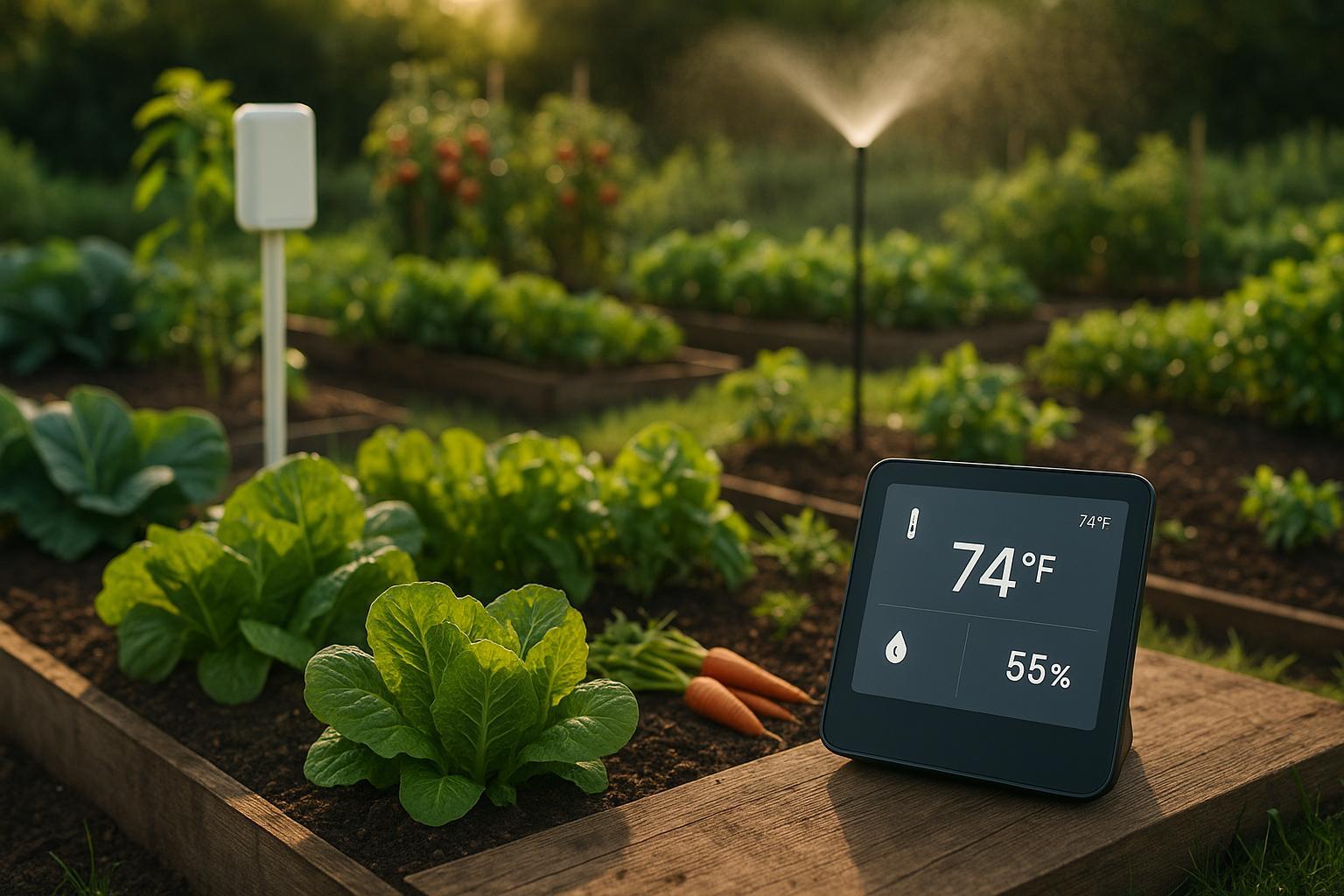
How Remote Climate Control Boosts Garden Productivity
Explore how remote climate control systems enhance garden productivity through automation, yielding higher returns and resource efficiency.
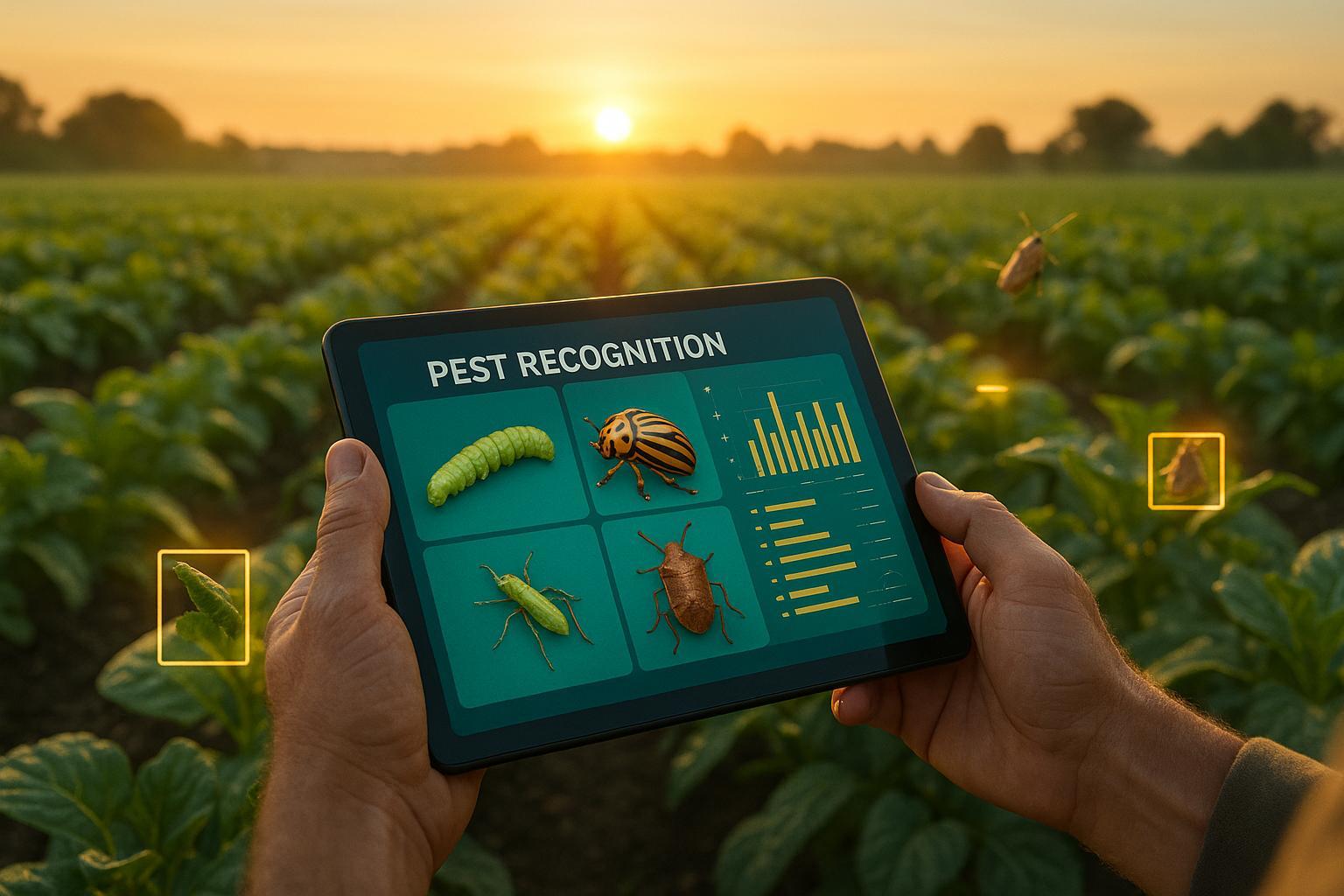
AI Datasets for Pest Recognition: Explained
Explore how AI datasets enhance pest recognition in agriculture, tackling challenges and leveraging synthetic data for improved crop management.
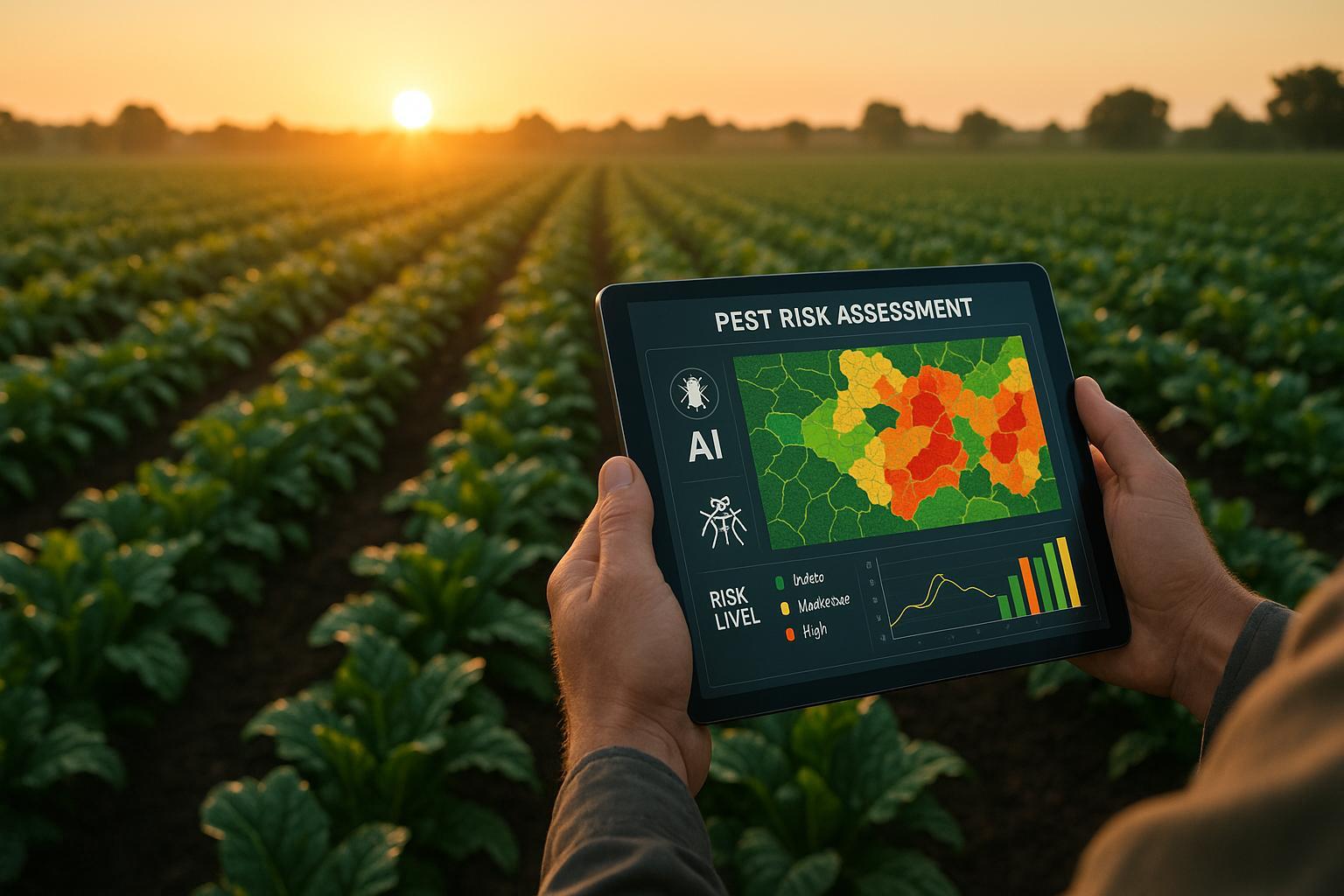
AI Tools for Pest Resistance Risk Assessment
Explore how AI tools are transforming pest management for farmers, reducing pesticide use and enhancing crop yields through advanced technology.
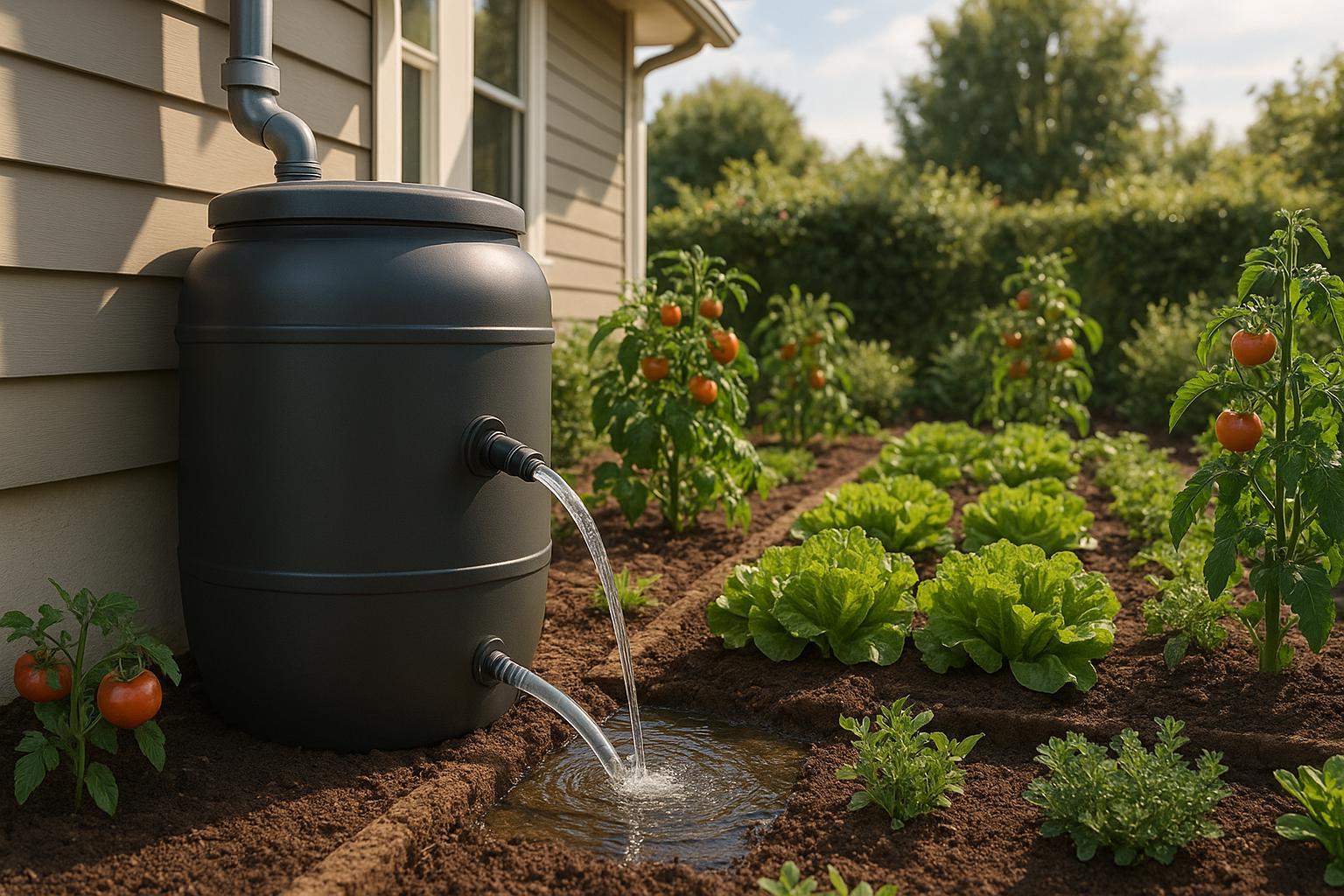
Ultimate Guide to Rainwater Filtration for Gardens
Learn how to implement an effective rainwater filtration system for your garden, enhancing plant growth while conserving water and reducing costs.

How AI Apps Detect Garden Pests in Real Time
AI apps revolutionize pest management by providing instant identification and tailored solutions for garden pests, enhancing plant protection.